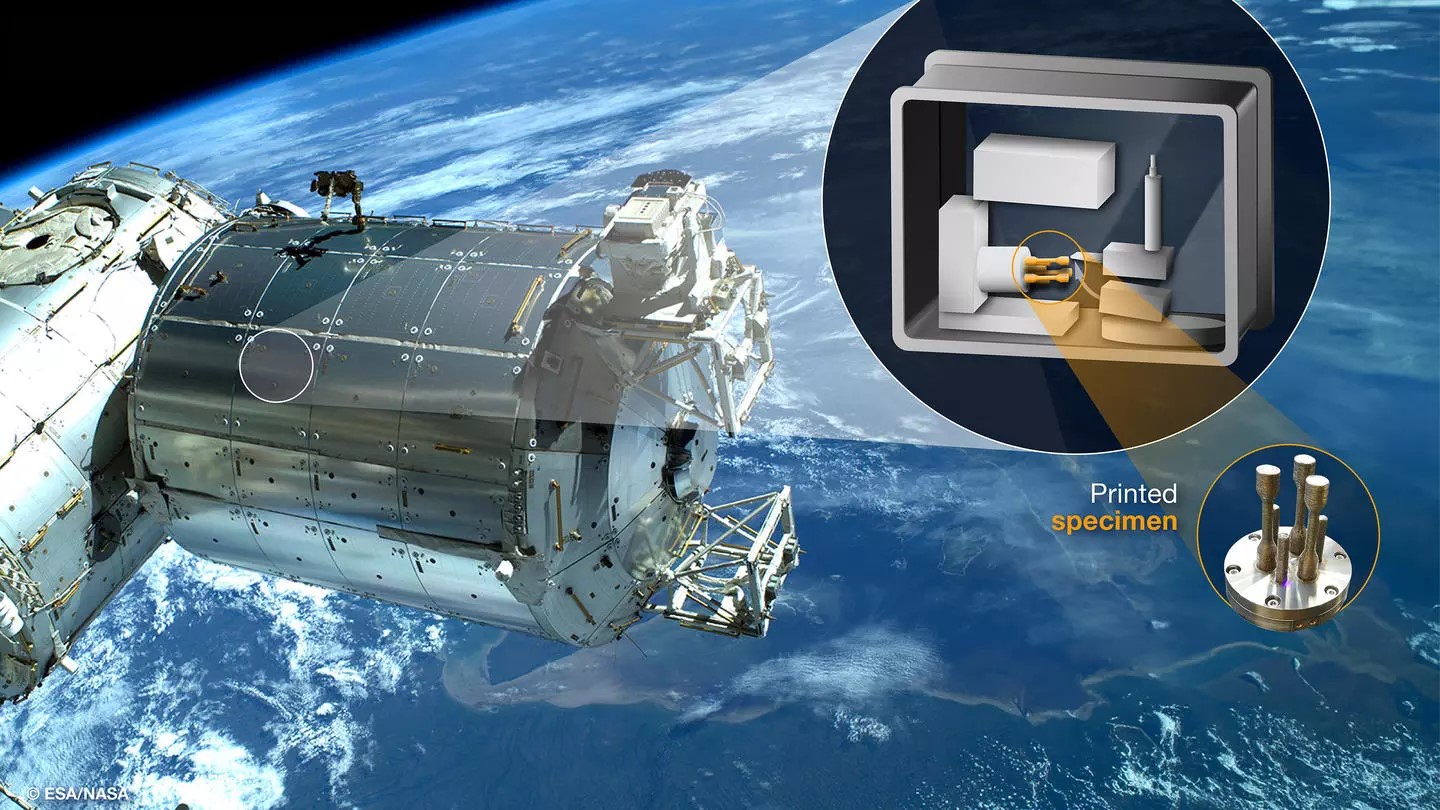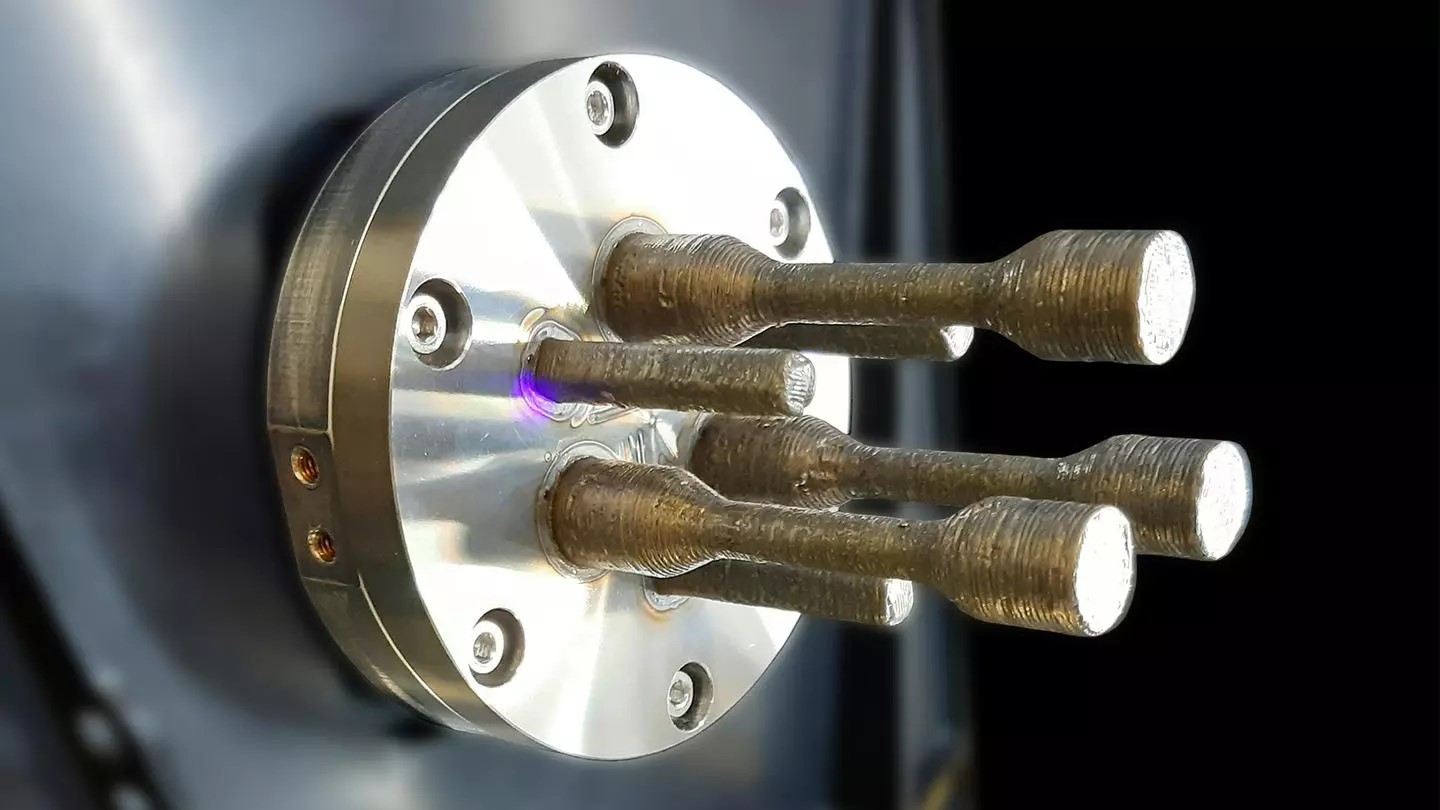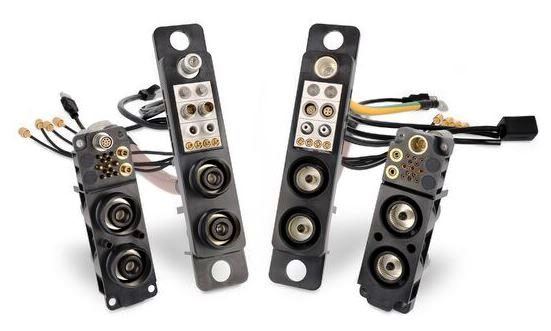World’s first metal 3D printer for space heads to ISS

Copyright Airbus
This significant development could be a real game changer for manufacturing in space and future missions to the Moon or Mars.
Additive Manufacturing (AM) is an industrial process that has opened up new ways of looking at how parts are designed. It has many uses from the day-to-day to the surprising: from simple repairs to bio-ink implants, from printing whole houses to producing spacecraft parts.
Metal 3D printing makes life easier for astronauts
There are already several plastic 3D printers on board the International Space Station (ISS), the first of which arrived in 2014. Astronauts have already used them to replace or repair plastic parts, since one of the major problems of everyday life in space is the supply of equipment, which can take months to arrive. But not everything can be made from plastic…
This logistical constraint will intensify on future Moon and Mars stations in the next few decades. Even though the raw material still needs to be launched, printing the part is still more efficient than transporting it whole up to its final destination.
Gwenaëlle Aridon, Airbus Space Assembly lead engineer, said: “The metal 3D printer will bring new on-orbit manufacturing capabilities, including the possibility to produce load-bearing structural parts that are more resilient than a plastic equivalent. Astronauts will be able to directly manufacture tools such as wrenches or mounting interfaces that could connect several parts together. The flexibility and rapid availability of 3D printing will greatly improve astronauts’ autonomy.”
The challenges of printing metal in space
While the process of 3D printing has been mastered on Earth, printing metal in space presents its own set of technical challenges. Sébastien Girault, metal 3D printer system engineer at Airbus, explained: “The first challenge with this technology demonstrator was size. On Earth, current metal 3D printers are installed in a minimum ten square metre laboratory.
“To create the prototype for the ISS, we had to shrink the printer to the size of a washing machine”. This miniaturisation is needed in order to fit inside the rack in which the printer will be housed on board the ISS’ Columbus Laboratory. “At this size, we can print parts with a volume of nine centimetres high and five centimetres wide,” Girault says.
The second challenge is safety: protecting the ISS from the aggressive printing environment caused by the laser and the heat it generates. The printer sits in a sealed metal box, which acts like a safe. The melting point of metal alloys compatible with this process can be far over 1,200°C degrees compared to around 200°C degrees for plastic, which implies drastic thermal control.
Girault said: “Gravity management is also key, which is why we chose wire-based printing technology. The wire is independent of gravity unlike the powder-based system, which always has to fall to the ground.”
Whether it's plastic or metal, fumes are emitted that have to be dealt with by filters and captured inside the machine so that they do not contaminate the air inside the ISS.
Aridon said: “Safety and contamination are key drivers for us not only for the ISS but for future use on the Moon.”

Copyright Airbus
Is metal printing suited to a microgravity environment?
This is one of the questions the team is setting out to answer. Two printers will be used for this experiment: the ‘flight model’ inside the ISS and the ‘engineering model’ on Earth. The astronauts will print four samples in space, which will be sent back to Earth for analysis. The same specimens will be manufactured using the engineering model printer. Girault said: “In order to evaluate the effects of microgravity, ESA and Danish Technical University will perform mechanical strength and bending tests and microstructural analysis on the parts made in space and compare them to the other specimens.”

Above: First of the four metal 3D specimens to be printed on board the ISS.
Copyright Airbus
The Moon in our sights
Metal 3D printing on board the ISS will help improve understanding of the quality of metal printing in orbit and provide valuable insights into operating a metal 3D printer in space. Printing structural parts in space is an important step in preparing the technologies humankind will need for a sustained presence on the Moon.
“Increasing the level of maturity and automation of additive manufacturing in space could be a game changer for supporting life beyond Earth,” Aridon stresses. “Thinking beyond the ISS, the applications could be amazing. Imagine a metal printer using transformed regolith [moondust] or recycled materials to build a lunar base!”
The metal 3D printer was developed by a consortium comprising Airbus Defence and Space, AddUp, Cranfield University and Highftech Engineering, under a programme of and funded by the European Space Agency (ESA).
N.B: The view expressed herein can in no way be taken to reflect the official opinion of the ESA.













